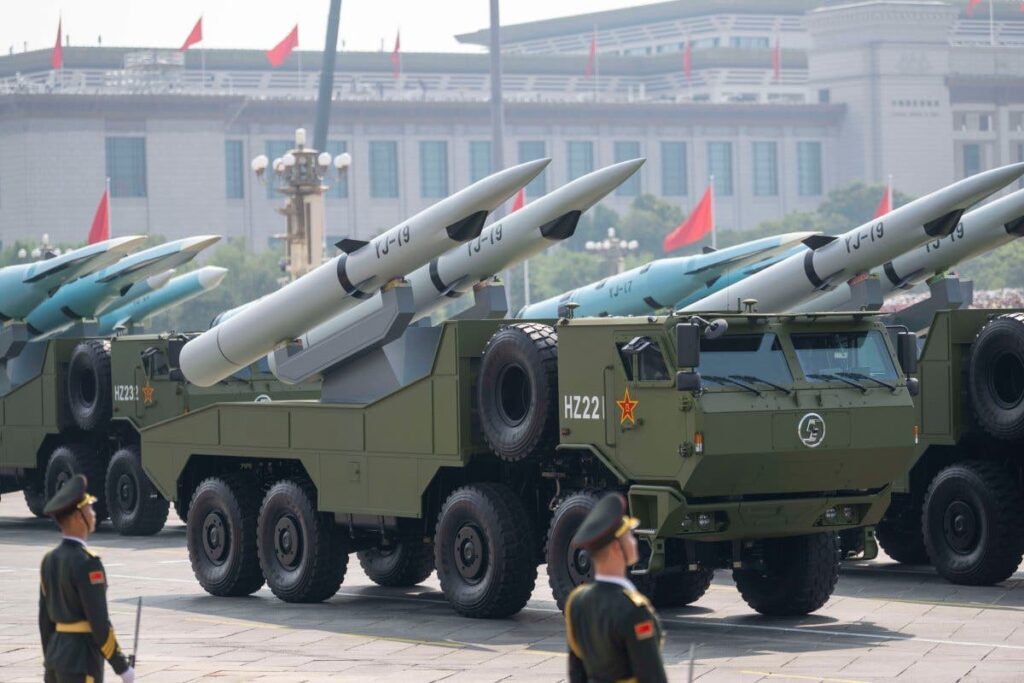The United States is behind Russia and China in its development of hypersonic weapons, a new study has warned.
A “battlefield asymmetry” is developing because of America’s slowness in working on hypersonic weapons compared to Russia and China’s determination, according to the Atlantic Council study revealed by Axios.
Newsweek has contacted the U.S. Department of War via email for comment.
Why It Matters
Hypersonic weapons represent a major shift in modern warfare, threatening to undermine traditional Western military superiority and putting the U.S. at a strategic disadvantage, according to a new report by the Atlantic Council Hypersonic Capabilities Task Force.
The warning coincides with the Trump administration’s push to establish a $175 billion hemispheric missile shield known as the “Golden Dome for America,” designed to defend against advanced missile threats—including hypersonic systems—from adversaries such as China, Russia and North Korea.
What To Know
The Atlantic Council’s newly released report highlights a “significant and growing” capability gap in U.S. hypersonic weapons when compared to Chinese and Russian advancements.
Hypersonic weapons travel at speeds greater than Mach 5, can maneuver in flight, and are challenging to detect and stop with current missile defense systems.
The study, informed by senior former leaders from the Pentagon, US Army, Air Force, and nuclear security agencies, states that mere incremental improvements will be insufficient to counter the growing asymmetry in the battlespace.
The task force’s key findings and recommendations include:
- Hypersonic weapons represent “a paradigm shift in modern warfare” and must be addressed urgently.
- Current missile defense systems, such as Terminal High-Altitude Area Defense (THAAD) and Patriot, may be overwhelmed by coordinated hypersonic attacks and are costly to maintain.
- The U.S. should develop lower-cost, higher-capacity missile systems and reusable hypersonic aircraft for intelligence gathering and other operations.
- Collaboration with allies (through programs like AUKUS Pillar 2) on technology co-development and production should be increased.
- America should explore hypersonic delivery systems for nuclear weapons, as conventional aircraft like the F-35A may not survive emerging threats in the 2030s.
Currently, Russian hypersonic systems under evaluation include the Kinzhal, Tsirkon and Avangard missiles. China fields the DF-17 and DF-26, among other systems.
The U.S. is developing its own suite, such as the Long Range Hypersonic Weapon (LRHW), Conventional Prompt Strike, Air-Launched Rapid Response Weapon (ARRW) and Hypersonic Attack Cruise Missile (HACM). Many of these U.S. systems remain in testing or limited deployment phases, according to an August Congressional Research Service report on hypersonic weapons.
What People Are Saying
Task force director Stephen Rodriguez told Axios: We need to act decisively now. That means aggressively fielding the first generation of U.S. hypersonic systems while fundamentally rethinking how we foster an industrial base that can deliver affordable capacity for the next generation.”
Deborah Lee James, former secretary of the Air Force and co-chair of the task force, told the National Defense Magazine: “It’s time to get busy. And that’s what this report is all about. It’s designed to put forth some actionable recommendations so that we reverse course and that we get going on this very important topic of fielding a capability for hypersonics.”
What Happens Next
The Pentagon and Congress are weighing how to respond to the hypersonic threat. Recommendations include fast-tracking new weapons, appointing a centralized weapons czar, improving interagency coordination and modernizing both detection and defense systems.
Future U.S. investments in missile defense initiative, such as the “Golden Dome for America,” and ongoing international cooperation with key allies, will likely play a prominent role as the U.S. navigates rapid advancements by its strategic competitors. Congressional hearings and further reports are expected in the coming months as policymakers debate budgets and oversight for hypersonic weapons and defenses.
Read the full article here

